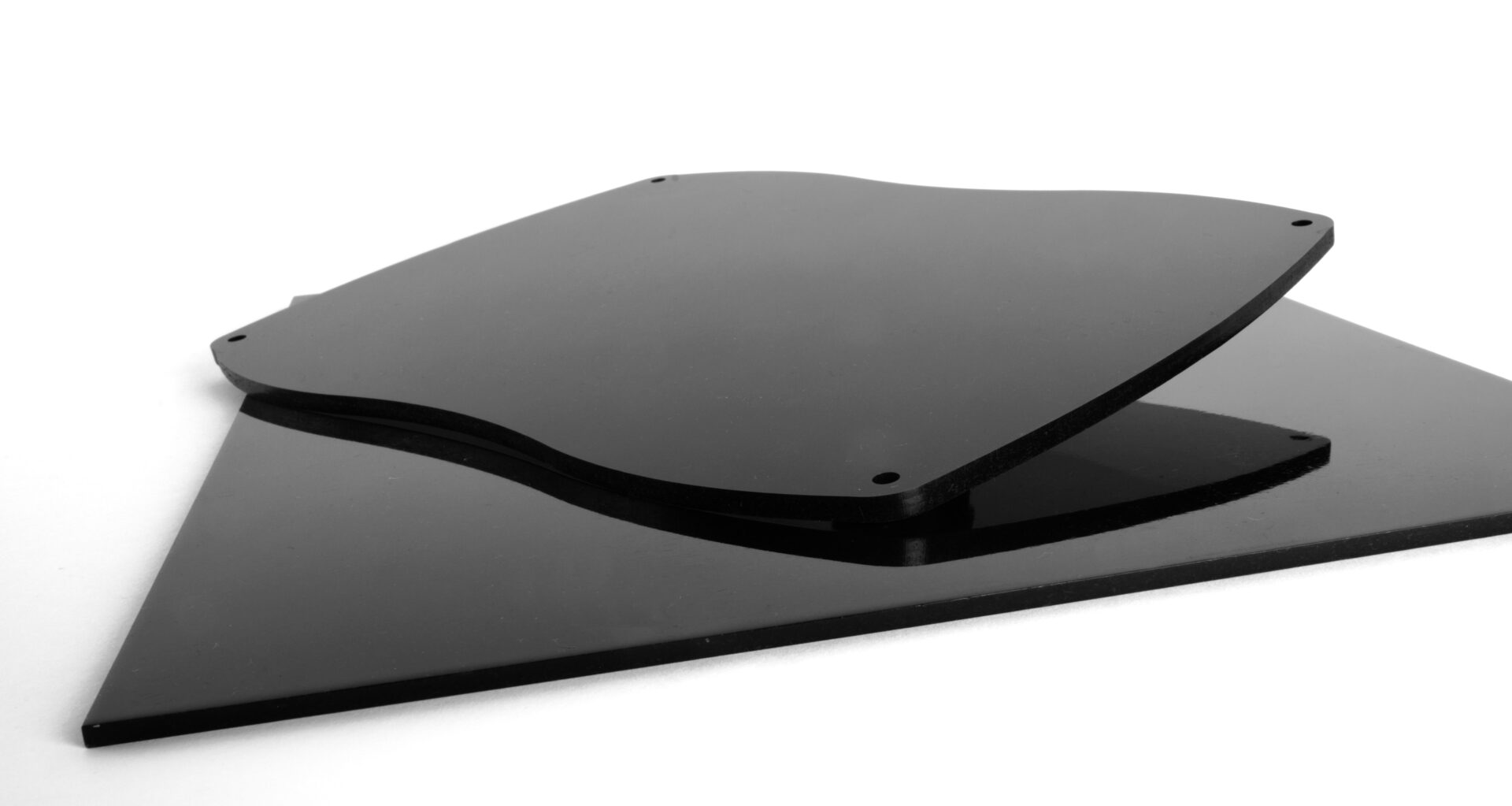AcouPlex – deceptively simple but wonderfully effective!
By Steve Dickinson

Over the decades, almost since the first day somebody decided to offer furniture to house your hi-fi system, debates have raged about the best material to put that hi-fi system on. Wood has long been a favourite, usurped for a while by metal and glass or acrylic (Perspex), while soaring ambition (and fast rising prices) has seen exotic composites, sandwiches and constrained layers all put in an appearance. Over the years fashions have waxed, waned, and sometimes waxed again. Designs have gotten more complex, more expensive and, as often as not, have come to look less and less like actual furniture. If form follows function, then clearly the function is a darn sight more complicated than just keeping the hi-fi off the floor and preventing the cat sitting on it.
Which, of course, it turns out is exactly the case. We know about the importance of supporting turntables so that, so far as possible, the only vibrations they measure are the ones on the disc, but we now understand a lot more about how microphony can insinuate its insidious influence into all manner of equipment, whether tubes or transistors, rotating disc or solid state. So not only does the integrity of the supporting structure have to make sense, the surface the equipment rests on also matters. Even the choice of the veneer on wooden shelves can make a difference. Long recognised by speaker builders, it’s a fact that somehow got overlooked when it came to equipment supports. One popular rack in the UK had MDF shelves finished with the purchaser’s choice of real wood veneers; it turns out that the cherry finish sounded better than the oak, the difference big enough to completely switch the sound quality ranking of two CD players in a direct comparison against each other.
None of this should come as a particular surprise. Chladni’s figures – a method of depicting the different modes of vibration of flat plates at different frequencies – have been known about since before the Victorian era. So it’s hardly a leap in the dark to suppose that the surfaces we place our equipment on will resonate, and resonate differently, when energised by the music we play or the equipment placed on it: Or that that resonance will vary in intensity but also in locus, with frequency; Or that some of that resonant energy will feed back into the equipment.
The most heated arguments have long revolved around just how audible the effects of all this are. Nobody denies it happens, in a fundamental sense, but there are plenty of people who get quite exercised when anybody else suggests the effects can ever be more than trivial and functionally inaudible. From my perspective, given that the same equipment sounds different on different support stands, and even different surfaces, functionally inaudible it ain’t.
Over egging the pudding?
Time to introduce the latest thing in supporting surfaces. AcouPlex has had a long gestation and it’s perhaps worth taking the time to trace that path and understand just how we got to where we are. It can trace its origins back a couple of decades, to experiments carried out by a small, specialist audio dealer south of Manchester (partly as a result of the ‘veneer effect’ described above). Their listening tests persuaded them that metals (especially ferrous metals but all metal to some degree) were best avoided anywhere near a hi-fi system. This in turn led to the development of products under their own MusicWorks brand, products that used plastics, notably acrylic, to replace critical components in hi-fi supports and elsewhere. Acrylic shelves were an early success. But although they sounded less overtly coloured than wood or glass, they were no panacea; you could definitely have too much of a good thing and the weight and deadness of an acrylic shelf could sometimes translate into leaden or pedestrian sound.

